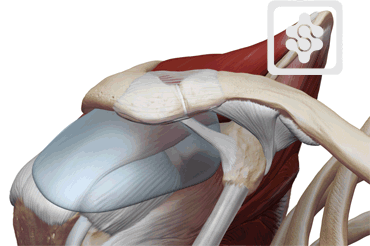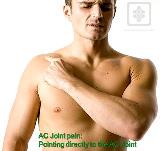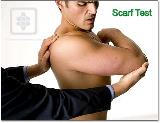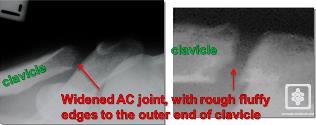AC Joint Osteolysis
Acromioclavicular Joint Osteolysis
What is it?
AC Joint osteolysis is essentially a stress fracture of the outer end of the clavicle (collarbone), where it joint the AC joint.
Osteolysis = bone erosion. The bone is eroded faster than it can be replaced or repaired.

Animation, showing the resorption of the bone at the outer end of clavicle and loss of normal AC Joint.
Causes
Excessive activities that load the outer clavicle and AC joint can lead to osteolysis, as the repetitive damage exceeds the ability for the bone to heal after loading. The AC joint is maximally loaded with heavy overhead activities. AC joint osteolysis is thus seen in strength and power athletes, such as weightlifters, powerlifters and rugby players. It is also more common in overhead heavy jobs, such as builders, plasterers, etc.
Diagnosis
- Localised AC Joint pain in a young overhead athlete or worker
- Usually under the age of 40 years
- Positive Scarf test on clinical examination and localised point tenderness
- X-Rays show the bone erosion of the outer end of clavicle.



Treatment
- Rest: Initially a good period of rest from overhead weighlifting is required for about 6 weeks, to allow the bone to heal.
- Anti-inflammatory (NSAIDs) medications and pain-killers are usually recommended to reduce the inflammation. However, NSAIDs can sometimes reduce bone healing.
- Physiotherapy is helpful for local pain-relief and also to balance the muscles supporting the AC joint (deltoid and trapezius)
- AC Joint Injection: a steroid or hyaluronan injection with local anaesthetic is often beneficial to reduce pain. The injections usually last for a few months and can provide relief whilst the bone recovers.
If the above does not settle the pain, arthroscopic excision of the eroded bone and damaged joint is often indicated. For more information on this surgery click here.
For the results of our treatment published for ACJ/ Lateral clavicle osteolysis see the News section.


